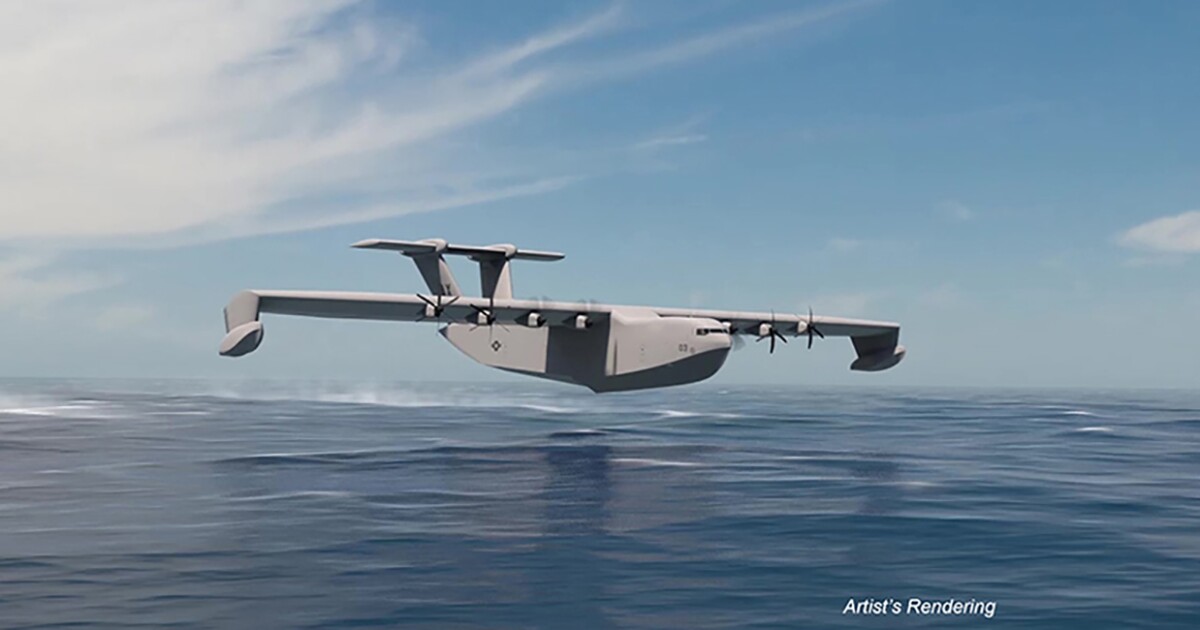
Aurora Flight Sciences has released a new video of its revolutionary wing-in-ground-effect Liberty Lifter concept aircraft that it’s developing for DARPA. The aircraft uses ground effect to lift heavy loads without the need for an airstrip or ship port.
At first glance, the Liberty Lifter looks like an old-fashioned prop plane from the 1940s, but looks can be deceiving. In a DARPA project begun in 2022, Aurora and General Atomics were contracted to develop their own versions of the transport, which uses wing-in-ground effect to trap a cushion of air under the wings while flying close to the ground or surface of the water.
This increases the range of the aircraft and allows the lifting of heavy loads while flying at high speeds at an altitude of 100 feet (30 m). In addition, unlike earlier Soviet Ekranoplan projects, it has the ability to fly at higher altitudes of up to 10,000 ft (3,000 m) and can take off and land in rough seas.
Liberty Lifter
The goal is to create a seaplane for military and emergency relief operations that can carry cargoes equal in size and weight to that of a Boeing C-17 Globemaster III, can operate in sea state 4 (wave height 1.25 m to 2.5 m (4.1 ft 8.2 ft)), and has a ferry range of 6,500 nm (7480 miles, 12,000 km).
The new video shows the complete Liberty Lifter in action, landing in the sea at a remote island location and unloading heavy armored amphibious vehicles before taking off again.
According to Aurora, their work on building an X-plane demonstrator aircraft with a wingspan of 213 ft (65 m) and capable of lifting 50,000 lb (22,680 kg) of cargo is in Phase 1B, which involves testing activities that end in a preliminary design review. In addition, tank tests have been made to test the design in the required sea state and wind tunnel tests for propeller performance.
Phase 2 will involve a critical design review and Phase 3 in 2026 will involve the building of the X-plane. The final aircraft scheduled to fly in 2028 will have a cargo capacity of 180,000 lb (81,000 kg).
“Liberty Lifter fills a critical gap between today’s airlift and maritime transport capabilities,” said Mike Caimona, president and CEO of Aurora Flight Sciences. “Development in this space will advance strategic operations at sea, and we’re proud to be working with DARPA, Boeing, and our partners to move this technology forward.”
Source: Aurora Flight Sciences
Source of Article